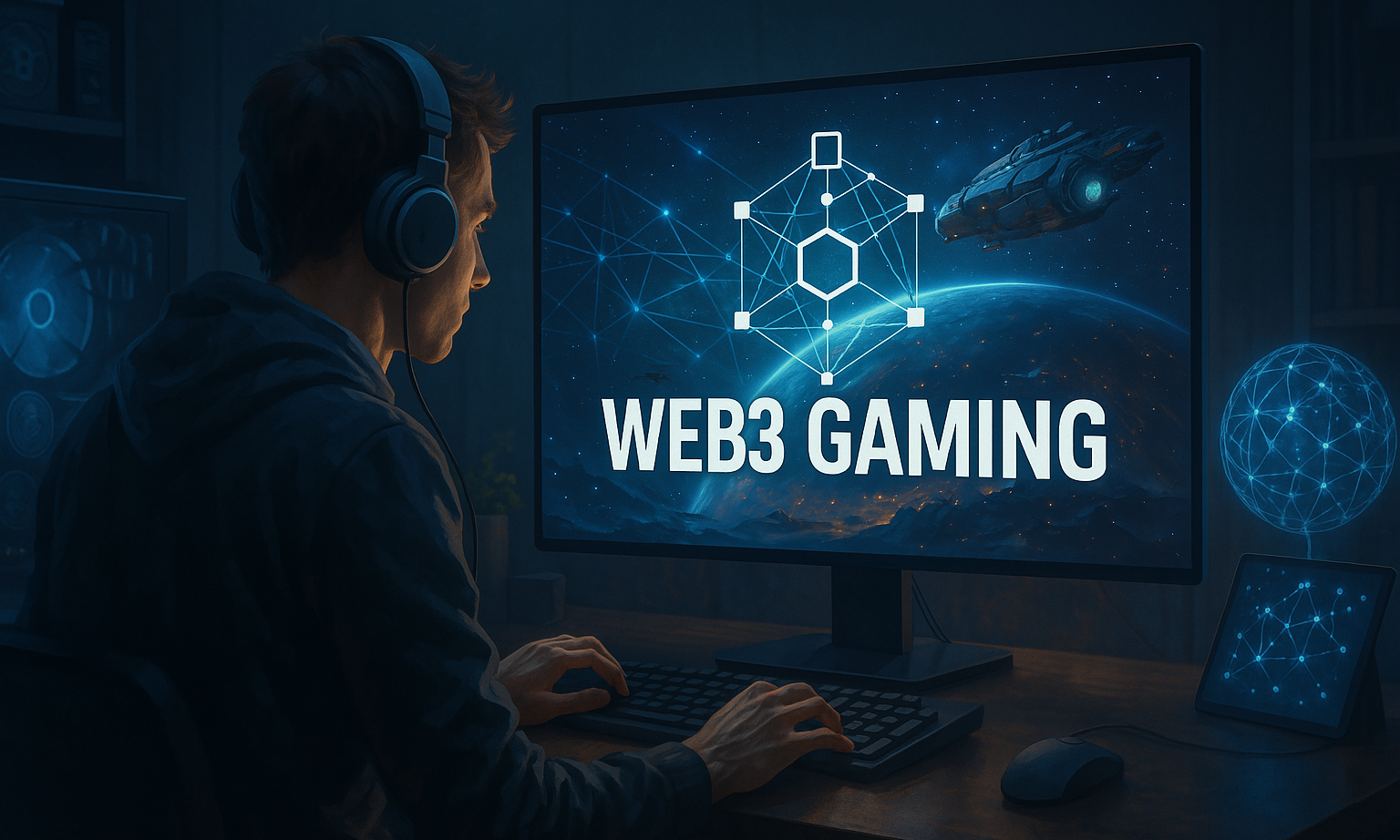Thought Leaders
The State of Web3 Gaming: Redefining Play, Ownership, and Community in a Decentralized Era

Web3 gaming is no longer a distant vision confined to whitepapers and crypto forums—it’s a tangible, evolving reality that’s reshaping the gaming industry from the ground up. Built on the pillars of blockchain technology, decentralization, and player empowerment, Web3 gaming is dismantling the traditional power structures of game development and ownership. It’s handing control to players and communities, fostering economic opportunities, and integrating cutting-edge innovations like artificial intelligence (AI). This thought leadership piece dives deep into the current state of Web3 gaming, exploring its key trends—decentralized governance, true digital ownership, utility-driven assets, AI co-creation, evolving monetization, and global accessibility—while spotlighting Star Atlas as a visionary example of where this revolution is headed.
Decentralization and the Dawn of Player Governance
The most profound shift in Web3 gaming is its move toward decentralization, a stark departure from the centralized control wielded by traditional game publishers. In the old model, developers and corporations dictated every aspect of a game—its rules, economy, and updates—often leaving players as passive consumers. Web3 flips this dynamic, placing ownership and decision-making power in the hands of the community. A standout example is Star Atlas, a blockchain-powered metaverse with an ambitious long-term vision: to evolve into a “Cybernation”—a persistent, decentralized, player-owned digital universe complete with its own economy, political framework, and governance system.
In Star Atlas, this vision takes shape through DAO-based governance, facilitated by the Star Atlas DAO and the Council of Peace. Players aren’t just participants; they’re stakeholders with real influence over in-game policies, economic strategies, and even development priorities. Governance tokens like POLIS serve as the backbone of this system, granting players tangible voting power. This isn’t a superficial gimmick—it’s a foundational shift toward fairness, transparency, and alignment between developers and their audience. By empowering players to shape the world they inhabit, Star Atlas exemplifies how Web3 gaming can foster a sense of collective ownership, hinting at a future where digital nations are governed not by a single entity but by the will of their citizens. This democratization of control is a cornerstone of Web3’s promise, setting the stage for gaming ecosystems that thrive on community input and trust.
Real Utility: The New Standard for In-Game Assets
The NFT craze of the early 2020s sparked both excitement and skepticism, with critics dismissing digital assets as speculative bubbles driven by scarcity rather than substance. Web3 gaming is rewriting that narrative by anchoring NFTs in real utility, ensuring they’re more than just collectibles. Star Atlas is at the forefront of this evolution, redefining how in-game assets function in today’s marketplace. Ships, crew members, land, and other items in the game aren’t static trophies—they’re dynamic tools with practical applications. Players can upgrade them, trade them, and monetize them across a variety of gameplay loops, including exploration, combat, mining, staking, and crafting.
This focus on utility bridges the gap between speculation and sustainability. In Star Atlas, a ship isn’t valuable simply because it’s rare; it’s valuable because it enables players to navigate the metaverse, engage in battles, or extract resources. This approach ensures that assets hold long-term worth tied to their role in the game, not just their market hype. As Web3 gaming matures, this utility-driven model is becoming the gold standard, proving that NFTs can be integral to immersive, player-centric experiences rather than fleeting status symbols. It’s a critical step toward building economies within games that endure beyond initial buzz, offering players both agency and incentive to invest in their virtual worlds.
True Digital Ownership and the Rise of Economic Sovereignty
Beyond gameplay, Web3 gaming is about empowerment—specifically, economic sovereignty. Blockchain technology enables true digital ownership, meaning players have verifiable control over their in-game assets, free from the whims of centralized servers or corporate shutdowns. This shift is transformative, particularly in light of current conversations around co-creation and ownership in digital spaces. In Star Atlas, players aren’t just spending money on fleeting entertainment—they’re gaining financial agency through their participation. This is especially impactful in underserved global regions, where gaming can become a legitimate avenue for earning real value.
Imagine a player in a developing country piloting a ship in Star Atlas, mining resources, and trading them on a blockchain marketplace for cryptocurrency that supports their livelihood. This isn’t a hypothetical—it’s the promise of Web3 gaming’s economic systems. By turning players into co-creators and stakeholders, these games challenge the traditional model of gaming as a one-way transaction. Instead, they create a circular economy where effort, creativity, and strategy translate into tangible rewards, fostering a sense of ownership that extends beyond the screen.
AI and Autonomous Agents: Co-Creating Web3 Worlds
The future of Web3 gaming isn’t just decentralized—it’s intelligent. The integration of AI is set to revolutionize how players interact with these digital universes. Picture AI-powered NPCs that adapt to individual playstyles, personalized onboarding assistants that guide newcomers, or autonomous factions managing their own economies within the game. Star Atlas is already laying the groundwork for this future, with plans to leverage AI for scalable storytelling and procedural quest generation. Its recent announcement with SingularityNET underscores this ambition, signaling a partnership that could bring AI-driven depth to the metaverse.
In this vision, AI doesn’t just enhance gameplay—it becomes a co-creator, working alongside players to expand and enrich the universe. Scalable storylines that evolve with community actions, dynamic economies run by AI agents, and personalized experiences tailored to each player’s journey are all within reach. This synergy of Web3 and AI promises worlds that feel alive, responsive, and infinitely expandable, pushing the boundaries of what gaming can achieve. It’s a glimpse into a future where human creativity and machine intelligence collaborate to build something truly unprecedented.
Evolving Monetization: Play-to-Own and Beyond
Monetization in Web3 gaming is undergoing a radical transformation, moving away from the pay-to-win traps of microtransactions and loot boxes. Instead, it’s embracing decentralized models that prioritize ownership and accessibility. Star Atlas exemplifies this with its “skin-in-the-game” approach, where players invest in assets that hold real value and utility. Its Fleet Rentals program takes this further, allowing newcomers to rent NFTs and participate without hefty upfront costs, democratizing access to the game’s economy. Meanwhile, rewards for meaningful contributions—whether through DAO participation, content creation, or in-game achievements—ensure that players are compensated for their engagement.
This shift creates a win-win dynamic: developers sustain their projects, while players gain equity in the ecosystems they help build. It’s a stark contrast to traditional gaming’s extractive monetization, replacing it with a system that aligns incentives and fosters long-term commitment. As these models evolve, they’re likely to set a new benchmark for how games generate revenue without alienating their communities.
Borderless Accessibility: Gaming Without Barriers
Perhaps the most revolutionary promise of Web3 gaming is its potential to break down barriers—geographic, financial, and technological. By leveraging blockchain and decentralized infrastructure, these games invite global participation in digital economies. Players in developing countries can earn real income through gameplay, turning leisure into opportunity. Partnerships like Star Atlas’s collaboration with Shaga, which enables cross-device compatibility and cloud streaming, further enhance accessibility, ensuring that high-end hardware isn’t a prerequisite for entry.
This borderless approach isn’t just about inclusivity—it’s about redefining gaming as a global equalizer. A teenager in Lagos, a freelancer in Manila, or a hobbyist in Berlin can all engage in the same metaverse, compete on equal footing, and contribute to its growth. Web3 gaming is poised to become a cultural and economic bridge, connecting diverse communities through shared digital experiences.
The Horizon of Web3 Gaming
Web3 gaming is still in its early chapters, but its trajectory is unmistakable: a future where players aren’t just consumers but architects of their digital realities. Projects like Star Atlas are trailblazers, blending decentralization, utility, AI, and inclusivity to create worlds that transcend traditional entertainment. As this space matures, the emphasis will remain on empowerment—giving players the freedom to govern, earn, create, and connect in ways that were once unimaginable. The state of Web3 gaming today is a bold declaration of what’s to come: a player-led revolution where the lines between virtual and real value blur, and the possibilities are as vast as the communities driving them forward.


















